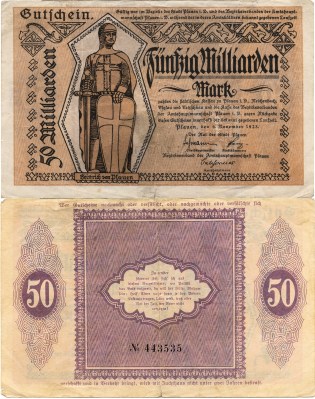There’s been a constant over the last few weeks’ news, thanks to Elon Musk we’re in another Bitcoin hype cycle. The cryptocurrency soared after the billionaire endorsed it, at one point coming close to $60k, before falling back to its current position at time of writing of around $47k. The usual tide of cryptocurrency enthusiasts high on their Kool-Aid hailed the dawn of their new tomorrow, while a fresh cesspool of cryptocurrency scam emails and social media posts lapped around the recesses of the Internet.
This Time It’s Different!
The worst phrase that anyone can normally say about a financial bubble is the dreaded phrase “This time it’s different“, but there is something different about this Bitcoin hype cycle. It’s usual to hear criticism of Bitcoin for its volatility or its sometime association with shady deals, but what’s different this time is that the primary criticism is of its environmental credentials. The Bitcoin network, we are told, uses more electricity than the Netherlands, more than Argentina, and in an age where global warming has started to exert an uncomfortable influence over our lives, we can’t afford such extravagance and the emissions associated with them.
Here at Hackaday we are more concerned with figures than arguments over the future of currency, so the angle we take away from it all lies with those power stats. How much energy does Argentina use, and is the claim about Bitcoin credible?

We have as good an estimate as possible of the power used by Bitcoin miners, in the form of the Cambridge University Centre for Alternative Finance’s Bitcoin network power tracker. At the time of writing it has an estimate of the network’s annual power consumption at 129.1 TWh. It’s easy enough to find global power consumption data and find that Argentina uses 125 TWh in 2019, so on those metrics the assertion that Bitcoin uses more power than Argentina holds water. A quick back-of-envelope calculation shows the figure to be equivalent to a nearly 15 GW power station running flat-out all year round,and looking up some figures for CO2 emissions per megawatt hour for a further calculations that represents about 130 million tonnes of CO2 from coal-fired power stations.
That’s 10 million tonnes more than the entire UK transport sector emitted in 2019. Arguments that some cryptocurrency may be mined from renewables do not apply, because while those coal fired power stations still exist they are supplying energy which could be supplied by renewable sources that are instead being taken up by the miners. Lest we forget that the Bitcoin algorithm is designed to become more difficult to compute as the blockchain progresses. Cryptocurrency farmers are not unaware of the electricity bills, perpetually seeking out the most efficient mining equipment. This makes for a hazy future, can hardware improvements keep up with increasingly elusive hashes or will the network’s electricity consumption continue to grow?
It’s inevitable that for the time being while our economies are in the transition away from fossil fuels there will continue to be CO2 emissions generated, so if that is the case then those emissions must provide a useful return. If we burn a tonne of fuel oil to move a shipload of freight containers then at least the emissions have done something for us, so is the same true for a cryptocurrency? Does a tonne of CO2 emitted by the miners do anything for us?
It’s reasonable to turn these same question around on traditional currency trading markets. The aggregate electricity usage of traditional stock markets not easily measured, but we know traders go to great lengths to find advantage like building data centers near trading centers for low-latency microwave link access to information. It’s worth considering that traditional trading uses a non-zero amount of energy and keep it in mind when flogging the cryptocurrency networks as unworthy of these resources. The problem is that Bitcoin just uses so much, present Bitcoin transaction levels are estimated to be equivalent to one half of the energy used by all data centers globally.
What Makes A Currency a Currency?

For a currency to be effective it must serve both as a convenient and usable method of conducting transactions, as well as a safe and reliable storage medium for wealth. I can take a pound down to my local Tesco superstore and buy a loaf of bread, or inflation notwithstanding I can put it in my bank account and go to Tesco with it in a year’s time and buy a loaf of bread then.
Putting it in the bank or handing it over at the checkout are both transactions that don’t cost me any extra money and are completed in an instant. That pound (or dollar, or whatever) isn’t just a shiny disc of metal, it’s a tiny statement of confidence in a country’s economy, and jokes about politicians aside, if that country continues to have trade and factories and consumers, it’s a pretty safe bet. A fiat currency such as the pound can lose that effectiveness when the economy goes into crisis, as happened in Germany in the years following the First World War, or in Zimbabwe following the collapse of the country’s agriculture sector after a disastrous land reform programme. When citizens of Germany began needing a literal wheelbarrow full of Marks to pay for break, and a year in the bank saw a Mark reduced to a tiny fraction of its previous value, the Mark had lost its effectiveness as a currency.
The whole point of a cryptocurrency is that it is not a fiat currency backed by a nation state or a real-world asset such as a pile of gold in Fort Knox. A cryptocurrency that is stable and easy to use would be a very effective currency, in that holding it is not risky and it can be taken to a merchant and exchanged for a loaf of bread without problem. Our next question is therefore whether Bitcoin satisfies those criteria and can be considered a useful currency.
The Cost of Bitcoin Transactions
A Bitcoin transaction carries a fee to the miners, it’s a variable rate that at the time of writing is somewhere around $25. There is also a wait for transactions to complete, until they have been placed in the blockchain by the actions of the miners. Therefore Bitcoin is not a convenient currency for transactions; while both of these drawbacks are nothing when buying a Tesla it makes the currency useless as a means to buy a loaf of bread. The Lightning network is an attempt to mitigate this by abstracting micropayments to a peer-to-peer network of participants who conceal their micropayments within a larger paid-for transaction on the main blockchain, but it is not without problems of its own and does not seem to have gained widespread understanding.

So Bitcoin has at least the potential to remain a useful currency for transactions, but does it stack up as a store for wealth? We hear about Elon Musk and institutional investors buying into the cryptocurrency, but what those stories fail to make clear is that those investments are only a small percentage of their much larger portfolios. What about those of us who aren’t multi-billionaires with huge diversified investment portfolios, and who stand to lose our shirts if our one investment goes south? A pile of pounds or dollars in a bank is a safe place to keep our life savings even if it’s not a particularly clever one in an era of low interest rates, so if Bitcoin is a currency we have to evaluate how its safety matches to that of a traditional currency. It’s tempting at this point to cite Bitcoin’s performance over the last decade as evidence of its safety as a store of wealth, and it’s true that had I put even a small percentage of my savings in the currency back when Laszlo Hanyecz bought his famous 10000 BTC pizza I would now be fabulously wealthy instead of a relatively penniless itinerant scribe (I remember reading that news back in 2010 and thinking “That’s cool but it’ll never catch on”, oh well).
But performance and safety of an investment are not the same metrics, so any appraisal of its wealth storage potential should look at it in the here and now: would you advise your grandmother to put her life savings into it? Even the most ardent Bitcoin enthusiast should admit that it is a volatile asset that is prone to sudden falls as well as the occasional stratospheric rise, so it’s difficult to make a case for it as anything other than a speculative investment vehicle and certainly not a safe place for Granny’s hard-earned.
Have We Backed The Wrong Horse?
The above is almost certainly not what most Bitcoin enthusiasts want to hear, that their currency may have the potential to be usable for everyday transactions but elusively remains a volatile wealth store that’s destroying the planet. But they’re awkward questions that have to be asked, otherwise having so far dodged Government financial regulation, the cryptocurrency may succumb instead to Government environmental regulation.
Cryptocurrencies and the blockchains that underpin them are an extremely cool idea, even though the blockchain is not the universal answer to all computing problems that some of its proponents appeared to present it as during the peak of its hype. It’s inevitable that in some form they will be a part of our futures, but perhaps it’s time to ask: In Bitcoin and cryptocurrencies which follow a similar model, have we backed the wrong horse?
No comments:
Post a Comment